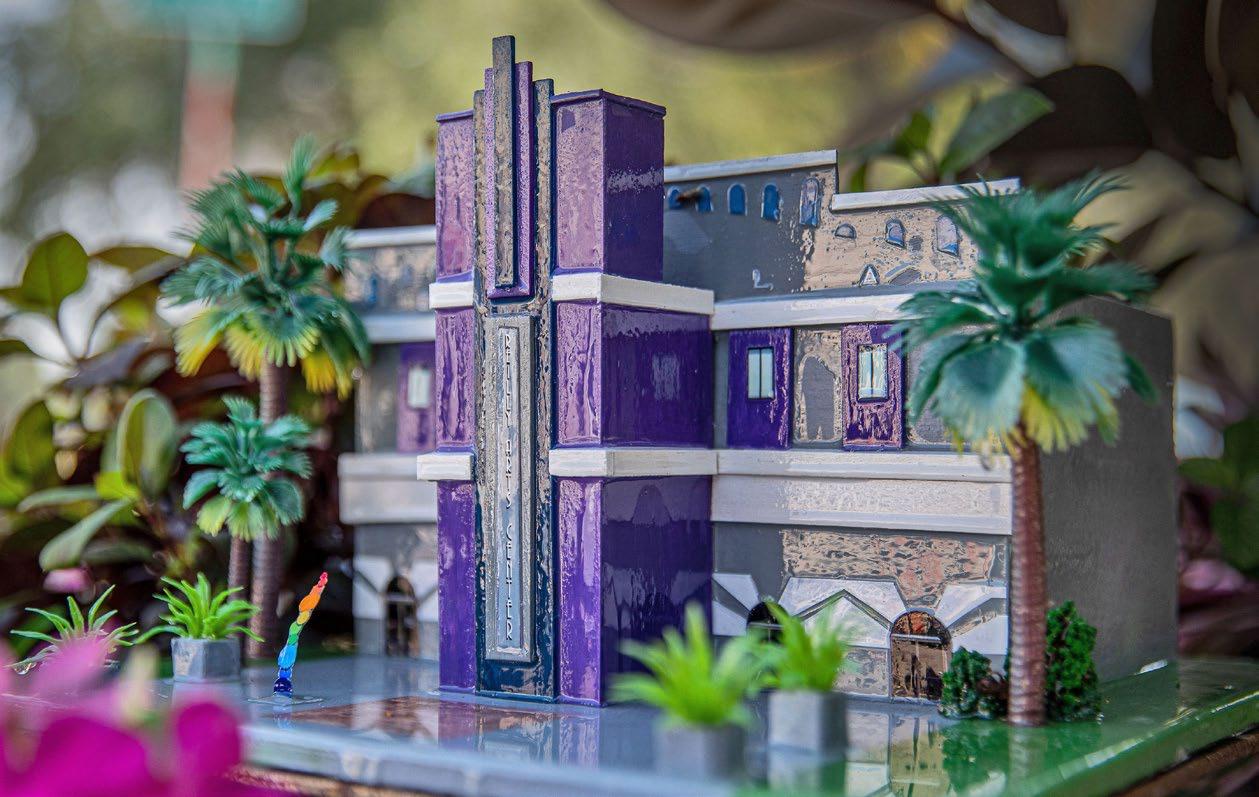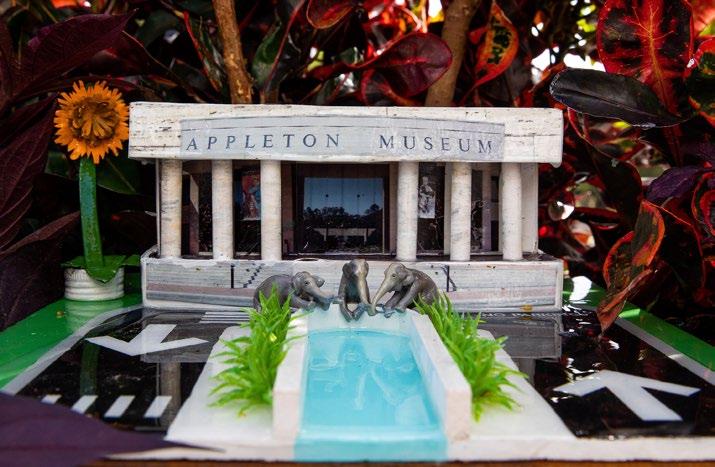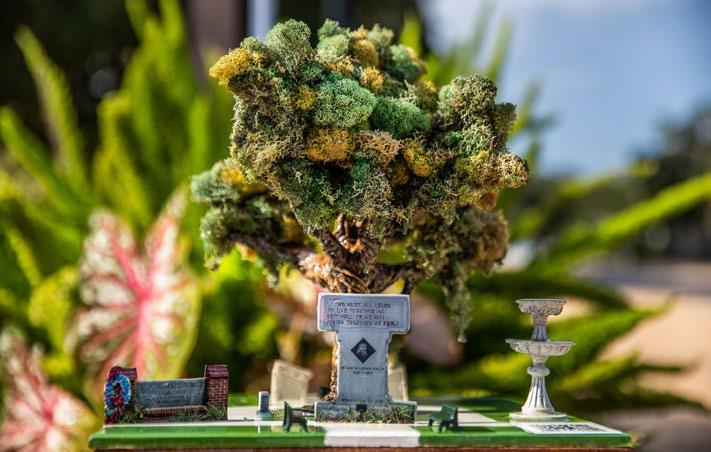
4 minute read
Tiny Art
A new public art project, “Small Spaces, Big Places,” is a showcase of Ocala’s iconic locations all over town. Think of it as the coolest scavenger hunt ever.
By Rick Allen, Photos courtesy Maven Photo & Film
Advertisement
From her vantage across the street, Mandy Bucci watches as people stop to examine a planter outside of Big Hammock Brewery & Bites at Southeast First Avenue and Fort King. But she couldn’t see what was there.
“I thought maybe it was a bird nest,” recalls the owner of The Mustard Seed Collection. Not birds, but the Reilly, an antsize version of the performing arts center in Tuscawilla Park.
The mini-Reilly is one of 10 pieces in the “Small Spaces, Big Places” public art project unveiled in June. They’re tiny representations of Ocala organizations that lend support to the arts in Marion County. Among the groups represented are Ocala Civic Theatre, the Discovery Center, Ocala Storytelling Guild, the Appleton Museum, and the Marion Cultural Alliance home at The Brick.
All are positioned somewhere downtown—some openly visible, others not so. Without a map, finding them is akin to a scavenger hunt. Don't worry, though, a map does exist.

Appleton Museum of Art
The “Small Spaces” exhibit is the creation of artist Diane Cahal, who moved to Ocala from Texas just in time for the first “Horse Fever” in 2001. A decade later, she was selected for “Horse Fever II.”
“After the experience of ‘Horse Fever,’ I began looking for a big project to gift to the community,” she says. “Something I could do on my own and show my complete adoration of the city.” Cahal says she stumbled upon the Tiny Doors Atlanta project and thought, “Oh my God, this is it!” Except it wasn’t. It seems there could be a copyright issue, so Cahal opted for bigger—more than a door, the whole building for some—in miniature.
Ocala’s Cultural Arts and Sciences Division commissioned the project “to bring awareness to 10 local not-for-profit organizations that have been at the city’s Levitt Amp Ocala Music Series.”
“It engages the community on a different level of discovery,” says Leslie Nottingham, cultural arts supervisor for the city. “It’s great to see a community investing so much. It’s a sign there’s growth happening.”
Understand, not all of these pieces are buildings. For instance, the West Port Booster Club piece is open but depicts in 3-D many of the disciplines offered at Marion County’s arts high school.
They’re all made of “recycled materials, paper, and lots and lots of glue,” Cahal adds. And challenges.
“For the Martin Luther King Jr. Park, I had to learn how to make a tree,” she says. “I won’t do that again.”

Martin Luther King, Jr. Commission

Brick City Center For The Arts
Each piece is coated in resin for weather protection. It’s what you do when you display art outdoors for everyone to enjoy. They’ll be on display through Christmas.
For more than a decade, the city of Ocala has seriously invested in outdoor art: First Friday Art Walks downtown, Tuscawilla Art Park, the larger-than-life sculptures around the pond in Tuscawilla Park, concerts in Citizen’s Circle and Downtown Square,murals on formerly blank building walls.
Typically they’re big. Now they’re small.
You could say the first Horse Fever was an introduction to citywide public art, unveiled while the city and nation still reeled from the 9/11 attacks in New York and Washington.
At the time of its sequel, Horse Fever held a state record for fundraising by a public art project. Auction of the painted ponies raised more than $1.2 million shared between horse sponsors and the MCA that fosters arts in Marion County.
Paula King was a co-organizer of the Fevers. “Ten years ago,” she said at the launch of Fever II, “I was told, ‘Trust your artists; they’ll come through for you.’ And they did. That’s what this is about, celebrating their talent in a way the entire community can enjoy.”
Cahal recalls her experience in Fever I. “I’d get up, greet the horse, get coffee, and stare at it to decide what to do.” Eventually she created Sunburst.
“Sunburst was fabulous,” says Laurie Zink, organizer of the Horse Fevers. Years later, “I was chairman of the Max [the Magnolia Art Xchange, in the old train station] when she brought this project to us. “At first we were, like, ‘What is that?’ Zink says. “Then she showed us what had been done in other places, and we just fell in love with it.”
“It gives people something fun to do.”

Discovery Center
And public art in general “makes a statement about the culture of your community,” Zink adds. “It shows we care about our city and want to bring out its best.”
Meanwhile, visitors downtown go about their business, many not noticing the lilliputian world around them.
Bucci admits she’s not gone a-hunting for all the Small Spaces pieces, but she thinks the concept is great. “With all the confusion, it’s kind of nice to have a little surprise.”
Want To See All The Small Spaces?
They’re scattered throughout Ocala’s downtown, from the Ocala Downtown Market to the parking garage to Downtown Square to the Brick City Center for the Arts. There’s a map link on Cahal’s website: artisticlunasea.com











